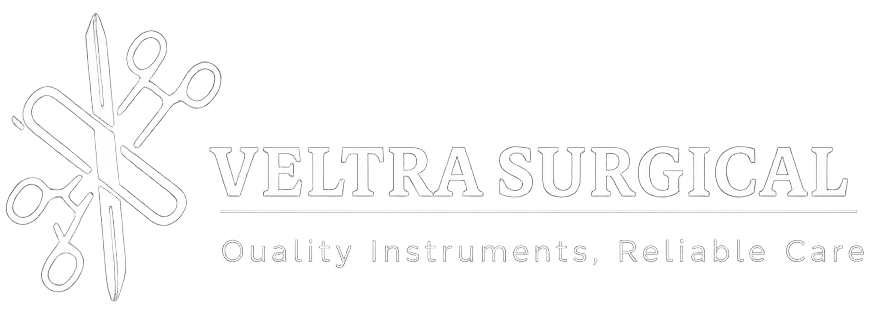Inside Nigeria’s Surgical Instruments Market — Size, Trends, and Future Opportunities
Nigeria’s healthcare system is growing — and with it the demand for surgical instruments. From reusable stainless-steel tools to single-use disposables, laparoscopic sets, and even the early arrivals of robotic systems, the market is diversifying fast. Below I’ve pulled together the current market picture, why demand is rising, what innovations are reshaping surgery in Nigeria, and which players are most visible on the ground today.
Market size & growth outlook (what the numbers say)
Reliable, public figures for only surgical instruments in Nigeria are fragmented and often bundled into wider “medical devices” or “surgical equipment” reports. Still, multiple market analyses agree on the same headline: the device market in Nigeria is growing at a healthy mid-single-digit to low-double-digit CAGR driven by population growth, higher health spending, and investment in hospital infrastructure.
- Industry reports place the broader Nigeria medical device market in the hundreds of millions of USD range (examples show valuations like roughly ~USD 750M–1.2B depending on scope and year), with forecasts of continued growth through the 2020s. Market Research Future+1
- Regionally, the Middle East & Africa surgical equipment market was estimated at several hundred million USD in 2024 and is expected to grow at a mid-single-digit CAGR — implying rising demand across markets that include Nigeria. Straits Research+1
Takeaway: the surgical-instruments segment is a meaningful and expanding slice of Nigeria’s medical devices market — opportunity exists for suppliers of both economical reusable sets and higher-value laparoscopic or single-use products.
What’s driving demand in Nigeria?
Several structural and practical trends are pushing procurement of surgical instruments:
- Expanding healthcare infrastructure — new private hospitals, upgraded government facilities, and rising elective surgery capacity (orthopedics, general surgery, gynecology). Ken Research
- Shift to minimally invasive surgery (MIS) — laparoscopic procedures reduce stay and infection risk, increasing demand for specialized laparoscopic sets and energy devices. Training programs and partnerships are slowly spreading MIS capabilities. ResearchGate
- Infection control and disposable instruments — single-use instruments and better sterilization solutions are in demand because they lower cross-infection risk where reprocessing capacity is limited. DataVagyanik
- Global suppliers + local distributors — international brands supply high-end instruments while local distributors supply consumables, basic instrument sets and maintenance services. sudabelt.com+1
Innovations reshaping surgical practice — what’s arriving in Nigeria (and Africa)
Innovation in surgical tools is global, but important threads are becoming visible in Nigeria:
- Minimally Invasive Surgery (laparoscopy) adoption. Hospitals in Lagos, Abuja and other tertiary centers are expanding laparoscopic programs; this drives demand for laparoscopic trocars, graspers, dissectors, and camera systems. Training and equipment financing remain the bottlenecks. ResearchGate
- Single-use/safe disposables. Where sterilization capacity is constrained, single-use blades, trocars and some instrument lines gain traction — reducing infection risk at the cost of recurring spend. DataVagyanik
- Surgical robotics — early but real. Robotic systems (da Vinci, Versius, Senhance) have been introduced in several African countries in recent years. While full-scale robotic programs in Nigeria remain limited, the continent’s experience foreshadows potential early adopters in major Nigerian private hospitals. The literature documents growing interest and some installations across Africa. PMC+1
- Device servicing & turnkey solutions. Demand for local biomedical engineering support (installation, preventive maintenance, calibration) is increasing — making after-sales service a key value proposition for suppliers. jnciltd.com
Who are the market leaders and active players in Nigeria?
There isn’t a single dominant national “surgical instruments brand” — the market is a mix of multinational suppliers, regional distributors, and local companies. Examples of visible players and categories:
- Local/regional distributors and suppliers — companies such as Geolis International, Sudabelt Medical, JNC International, Ginos Ventures, Saint John Medicals and similar firms act as importers, distributors and service providers across Nigeria. They supply everything from instrument sets to imaging and sterilization equipment. saintjohnmedicals.com+4geolisintlltd.com+4sudabelt.com+4
- Global OEMs — international device makers (e.g., Johnson & Johnson, B. Braun, Stryker, Medtronic, Smith & Nephew) are active in the region via distributors and tenders for hospital projects (they’re the main sources of higher-end specialized surgical systems). Industry reports highlight large global players as principal market shapers in surgical equipment. Cognitive Market Research+1
- Niche & specialist providers — companies offering laparoscopic towers, endoscopy consumables, or sterilization/biomedical services are often regionally based or partnered with international vendors. deviceinformed.com+1
Challenges & what suppliers must solve
- Cost sensitivity. Price matters — many facilities prioritize durable, reusable stainless instruments or low-cost consumables. Financing models and flexible procurement matter. Ken Research
- Training & maintenance. New technologies (laparoscopy, robotics) require trained surgeons and bio-med engineers; suppliers who bundle training + service stand out. ResearchGate
- Regulation & import logistics. Import processes, registration, and customs can slow supply; local warehousing and clear regulatory guidance reduce friction. Novatia Consulting
Practical advice for buyers & suppliers
- Buyers (hospitals/clinics): evaluate total cost of ownership (instruments + sterilization + service), not just unit price. Consider standardized reusable sets where sterilization is adequate; switch to single-use items where infection control is a concern.
- Suppliers: offer bundled training, local maintenance, and staged financing. Demonstrations, short courses, and partnerships with teaching hospitals accelerate adoption. Target Lagos, Abuja and major teaching hospitals first — these are the fastest adopters.
Bottom line
Nigeria’s surgical instruments market is growing, driven by infrastructure upgrades, greater MIS adoption, and rising standards for infection control. While the market combines global OEM influence with strong local distributors, the sweet spot for success is solving local operational problems: affordable financing, training, dependable service, and supply chain reliability. For firms that can combine those elements, Nigeria offers a promising — and expanding — market for both basic and advanced surgical instruments.












